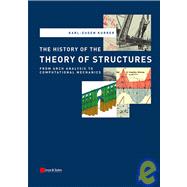
Note: Supplemental materials are not guaranteed with Rental or Used book purchases.
Purchase Benefits
Looking to rent a book? Rent The History of the Theory of Structures From Arch Analysis to Computational Mechanics [ISBN: 9783433018385] for the semester, quarter, and short term or search our site for other textbooks by Kurrer, Karl-Eugen; Ramm, Ekkehard. Renting a textbook can save you up to 90% from the cost of buying.
| Foreword | |
| Preface | |
| Preface to the first, German edition | |
| The tasks and aims of a historical study of theory of structures | |
| Learning from the history of structural analysis: 11 introductory essays | |
| The first fundamental engineering science disciplines: theory of structures and applied mechanics | |
| From Masonry arch to elastic arch | |
| The beginnings of a theory of structures | |
| The discipline-formation of theory structures | |
| From construction with iron to modern structural steelwork | |
| Member analysis conquers the third dimension: the spatial framework | |
| Reinforced concrete's influence on theory of structures | |
| From classical to modern theory of structures | |
| Twelve scientific controversies in mechanics and theory of structures | |
| Perspectives for theory of structures | |
| Brief biographies | |
| Bibliography | |
| Name index | |
| Subject index | |
| Table of Contents provided by Publisher. All Rights Reserved. |
The New copy of this book will include any supplemental materials advertised. Please check the title of the book to determine if it should include any access cards, study guides, lab manuals, CDs, etc.
The Used, Rental and eBook copies of this book are not guaranteed to include any supplemental materials. Typically, only the book itself is included. This is true even if the title states it includes any access cards, study guides, lab manuals, CDs, etc.